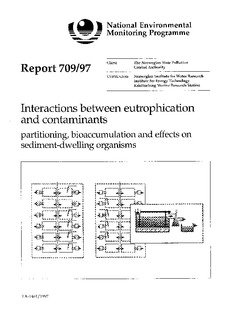Interactions between eutrophication and contaminants - partitioning, bioaccumulation and effects on sediment-dwelling organisms
Abstract
To study interactions between eutrophication and contaminants in marine sediments an experiment was designed and set up at NIVA's Marine Research Station, Solbergstrand. The experiment was performed in 24 continuously flushed glass aquaria within which three sediment-dwelling species were kept in a marine sediment. A filter-feeder. blue musser, was kept in downstream aquaria. The experiment combined three environmental factors: oxygen availability, the presence or absence of contaminants, the addition of organic matter. The objectives of the project were (1) to quantify differences in the partitioning of contaminnts between sediment, pore water and biota as a result of the treatments, (2) to quantify effects of treatments and interactions between treatments on sediments-dwelling organisms, (3) to identify differences, if any, in the release of contaminants from the sediment as the results of treatments. All three contaminants bioaccumulated to higher levels in sediments with increased levels of organic material. Whereas feeding directly or indirectly appeared to be the major route for bioaccumulation of benzo(a)pyrene and mercury (Hg), was cadmium (Cd) also controlled by the concentration in pore water. Furthermore, sediment in enriched aquaria released more contaminants than sediment with low organic content. Organic enrichment had strong effects on growth in the three sediment-dwelling organisms. Growth was less affected by decreased oxygen availability. The presence of contaminants had only minor effects on the three sediment-dwelling species at the concentrations used here. Some biomarkers in N. diversicolor and A. filiformis reflected tissue contaminant concentrations, whereas there was no response in biomarkers in A. alba to any treatment or contaminant.
Publisher
Norsk institutt for vannforskningSeries
NIVA-rapport;3700Overvåkingsrapport;709/97

